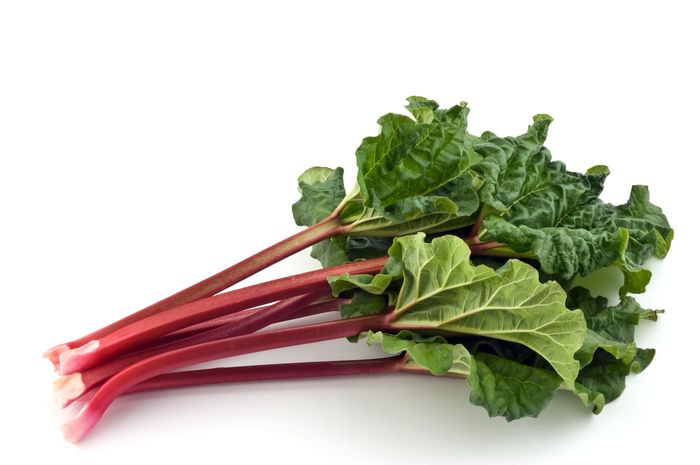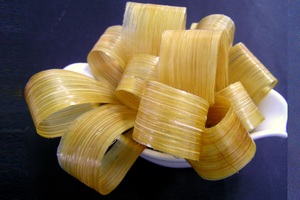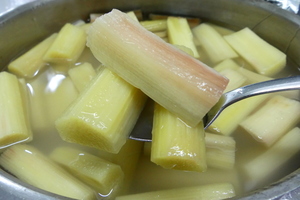Rhubarb
Seasonal period:
April, May, June
Rhubarb is a plant reminiscent of a chard. It has a long thick stem with colours that range from green to intense red and big palm-shaped leaves. It can be eaten raw, in salads, in compote, jam or marmalades or combined with creams and red fruits. It is usually eaten with other calcium rich products as it contains oxalic acid, which attacks the enamel of teeth.
Nutritional information (0.1 kg)
Energy
116.0
kcal
Carbohydrates
31.2
g
Proteins
0.4
g
Lipids
0.1
g
Sugars
28.7
g
Salt (Sodium)
100.0
mg
Folic acid
0.0
ug
Vitamin C
3.3
g
Vitamin A
0.0
ug
Zinc
0.1
mg
Iron
0.2
mg
Calcium
145.0
mg
Cholesterol
0.0
mg
Polyunsaturated fatty acids
0.0
g
Monounsaturated fatty acids
0.0
g
Saturates
0.0
g
Fiber
2.0
g
The data is merely a guide and should not be used for medical purposes. Those responsible for the web disclaims any responsibility.
-
Type of dish
- Beers
- Cocktails
- Breakfasts and brunch
- Burguers
- Juices, milkshakes and beverages
- Shellfish
- Bread and pastries
- Pizzas, patty
- Dessert
- Pasta
- Sándwich
- Pastries
- Finger foods
- Ice creams and sorbets
- Legumes
- Salads
- Eggs
- Patty
- liqueur
- Harvard plate
- Main course
- Meats
- Fish
- Birds
- Vegetables
- Soups and creams
- Rices
- Coffee, chocolate and infusion
- Cheeses
- Appetizers and canapes
- Temperature
- Cuisine type
- Additional culinary preparation
- Conservation technique
- Seasonal recipes
-
- Aromatic herbs
- Beverages
- Big game hunt
- Bread and pastries
- Canned goods and pickles
- Cereals
- Condiments, spices and additives
- Cooked, salted, preserved and cold meats
- Dried fruits and nuts
- Dry pulses
- Edible oils and vinegars
- Eggs and derivatives
- Feathered game hunt
- Fish cuts
- Fishes
- Insects
- Kitchen and bakery tecniques
- Kitchen and bakery utensils
- Meat cuts
- Meats
- Milk, cream and derivatives
- Mushrooms
- Offal
- Pasta, rice, flour and derivatives
- Poultry
- Seafood
- Service techniques
- Service utensils
- Vegetables cuts
- Vegetables, fruits, tubers and seaweed




